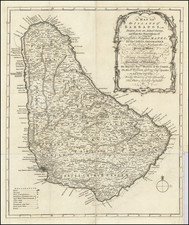Kingstown Immediately After the Abolition of Slavery in 1834
Fine aquatint view of Kingstown, St. Vincents, published in London by Ackermann & Co.
The view offers a captivating vista, as drawn by Lieutenant John Herbert Caddy in 1837. The image shows a serene panorama of Kingstown, the capital of St. Vincent and the Grenadines, as seen from Cane Garden Point.
In the foreground, a solitary figure, possibly a local or a traveler. The tranquil waters of the harbor include a variety of sailing vessels, signifying the economic vitality of the port as a nexus of trade and cultural exchange in the Caribbean during the colonial period.
The town includes rows of neatly aligned colonial buildings that trace the curve of the bay. This urban landscape, interspersed with pockets of lush Caribbean flora, suggest the geopolitical significance of Kingstown as an administrative and commercial hub under British rule.
The Set
The view comes from a rare set of 12 aquatints, which last sold in the Reese sale for over $20,000 in 2022.
St. Vincents
Initially, St. Vincent was a contested site between the French and the British, with the British ultimately taking control after the Treaty of Paris in 1763. They established a plantation economy reliant on slave labor from Africa, growing crops like sugar, coffee, and cotton, which became the economic backbone of the island.
The indigenous Black Caribs, or Garifuna, offered fierce resistance to European colonization. This resistance culminated in the British expelling over 2,000 Garifuna to Roatán in 1796 after the Carib Wars, ending the native Carib resistance and presence on the island.
As the 19th century began, the global sentiment toward slavery was shifting. The British Empire outlawed the slave trade in 1807 with the Slave Trade Act. Subsequent legislation, including the Slavery Abolition Act of 1833, initiated a process that led to the abolition of slavery in St. Vincent in 1834, with full emancipation following four years later in 1838.









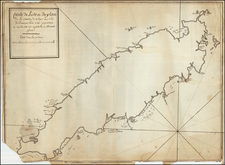
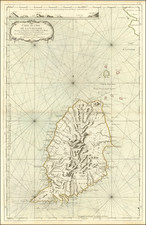
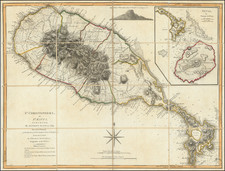
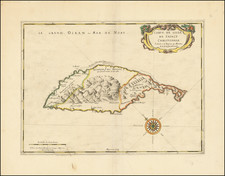
![[Barbados] Carta De La Isla De La Barbada Reducida y Gravada Por D. Juan Lopez . . . 1780](https://storage.googleapis.com/raremaps/img/small/85048.jpg)
